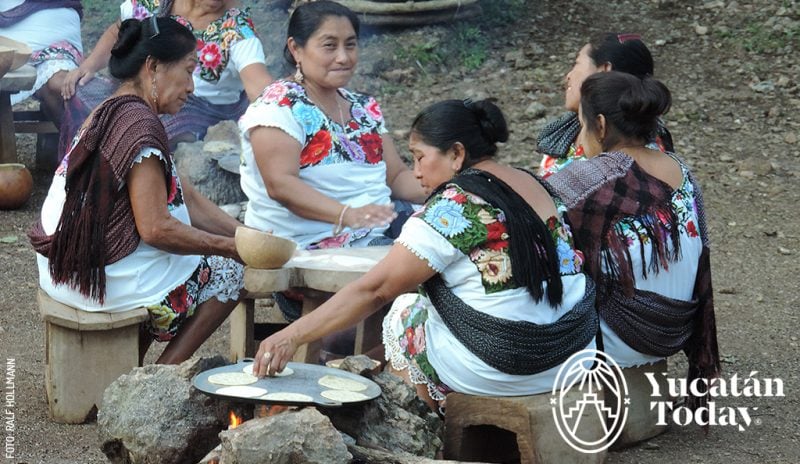- Home
- Destinations
- Maní
The Magical Town of Maní: the Place Where Everything Happened
Of Yucatán’s Magical Towns, none says “cultural tourism” quite like Maní, 95 km or 60 mi southeast of Mérida. In Maní, history, legends, craftsmanship, and nature come together to create a truly magical experience. Here’s everything you need to plan your visit.
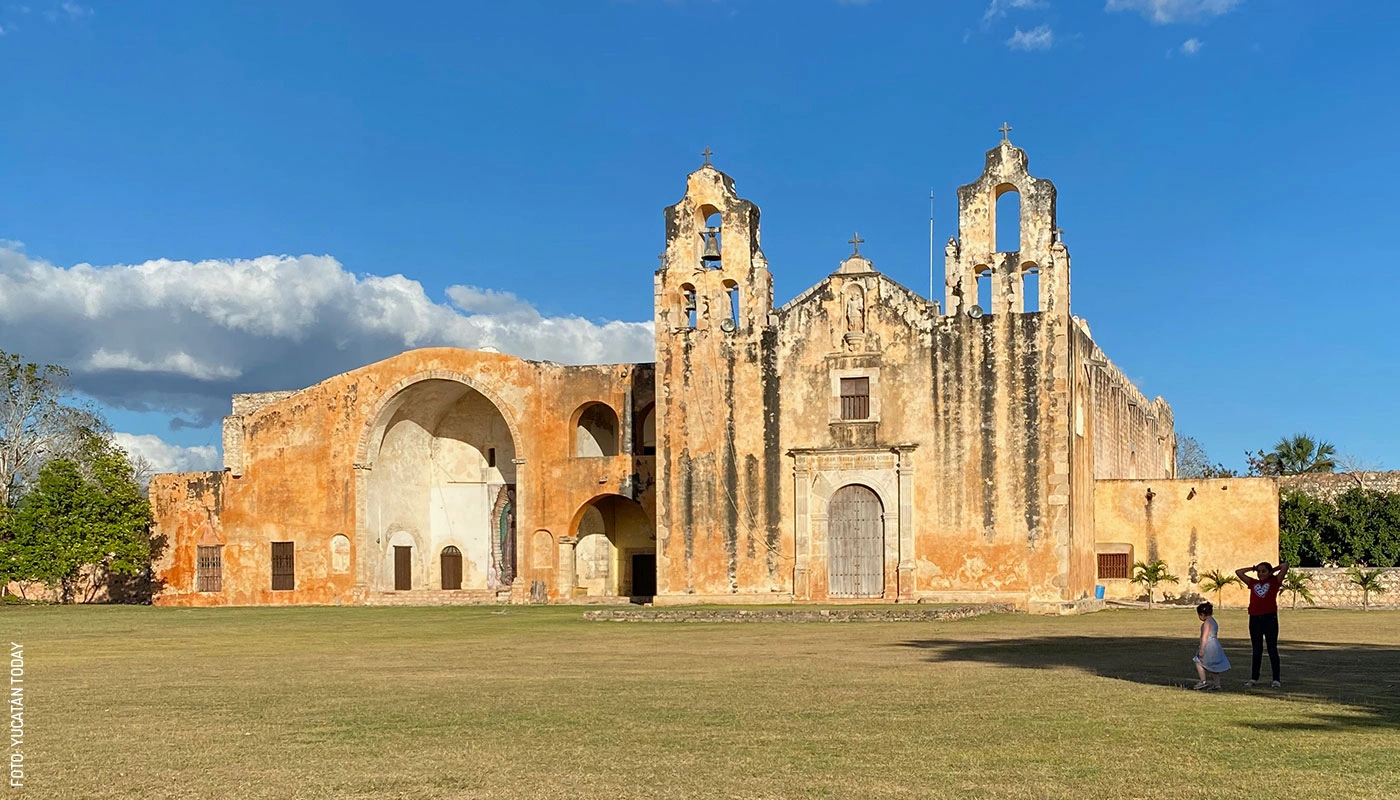
Prepare your visit to Maní, Yucatán

In Maya, Maní means something along the lines of “it happened;” this is believed to be a reference to the distinguished Maya lineage of the Xiu, the city’s founders, and their will to begin anew. Nowadays, the translation is styled as “the place where everything happened,” as this small village, just short of 6,000 inhabitants by the time of the 2020 census, has been at the center of more than one noteworthy historical event.
The Magical Village of Maní is perfect to explore by foot: distances are short and the streets safe to walk. Wearing comfortable (and slip-resistant, if you’re venturing into the Xcabachén cave) shoes will surely make a difference. Unless you’re very used to high temperatures, it’s always a good idea to bring cool water and a hand fan, and to protect yourself from the sun with a hat and sunscreen.
If you’re visiting a Melipona (stingless) bee farm, make sure to tie and/or cover your hair to keep the bees from getting tangled in it; avoid wearing perfume, lotion, or other fragrances that might upset the hives. Insect repellent is a good idea to ward off mosquitos, but we can’t stress enough the importance of thoroughly washing your hands if you’re planning to touch the bees (a unique experience worth trying).
Finally, don’t forget to bring enough cash. Few businesses in Maní take charge cards, and there are no ATMs (or banks) in the village; the closest ones (BBVA, Citibanamex, and Banorte) are in the neighboring villages of Oxkutzcab and Ticul.
A quick look at the history of Maní
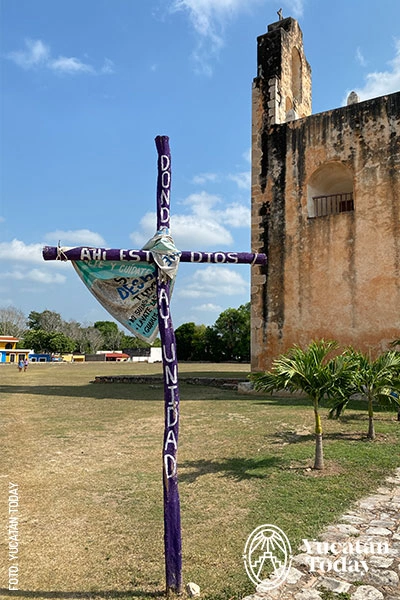
As a young, vibrant city, Maní immediately became a site of interest for the new arrivals, and as such, one of the main hubs for the Península’s evangelization efforts. The Xiu, on advice by the Chilam Balam (prophet) of Maní, warmly welcomed the Spaniards at the beginning of the Conquest; by the time of its completion, the Maní territories had been given to Francisco de Montejo himself to manage as an Encomienda. Still, Spanish authorities allowed the Xiu (baptized into catholicism with names such as Francisco and Melchor de Montejo Xiu) to rule the province between 1549 and 1562.
The Maní Auto-da-Fé

On July 12, 1562, a group of children came across a cave filled with evidence of clandestine practices combining pre-Hispanic and Christian elements. The Spanish reaction, led by the Franciscan friar Diego de Landa, was draconian. In addition to publicly torturing and exhibiting “heretic” natives (not only those who were alive, but also those who had already been buried under Catholic rites), a massive number of Maya codices, records, and artifacts were burned on the church atrium. After having to justify his illegal inquisition before the Spanish crown, Diego de Landa would return to Yucatán and write the “Relación de las cosas de Yucatán.” This treaty, published in English as “Yucatan Before and After the Conquest: The Maya,” documents some Maya practices and beliefs, and includes a catalog of glyphs that would turn out to be key in deciphering Maya writing centuries later.
What to see and do in Maní
St. Michael’s Church and Former Monastery (Iglesia y ex Convento de San Miguel Arcángel)
Without a doubt, Maní’s most iconic sight is the church and monastery of St. Michael. This was, as a matter of fact, the third religious construction carried out in the region (just after the Spanish towns of Mérida and Campeche), and the first one to be built in an “Indian village.” The main site’s construction began in 1549 and was completed in only seven years, thanks to the Xiu lords’ conversion to Christianity, and their outstanding organization of their subjects’ labor.
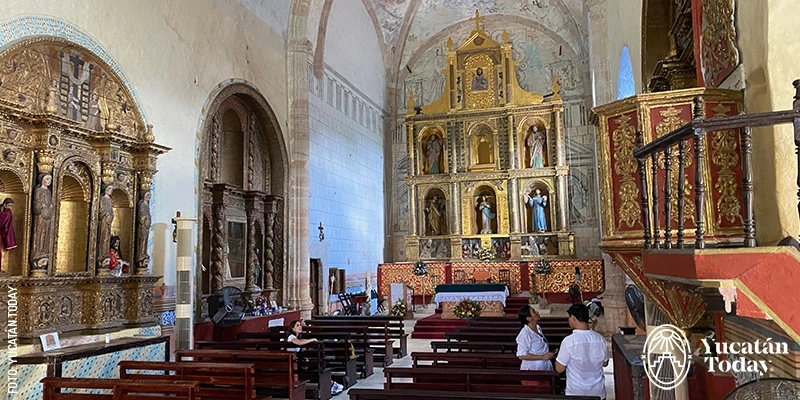
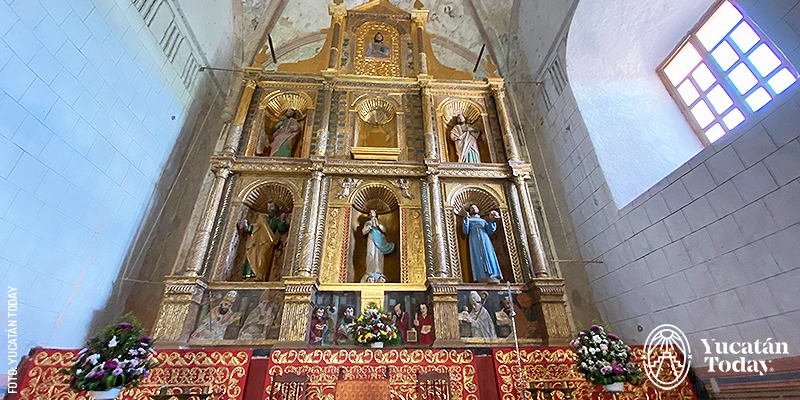
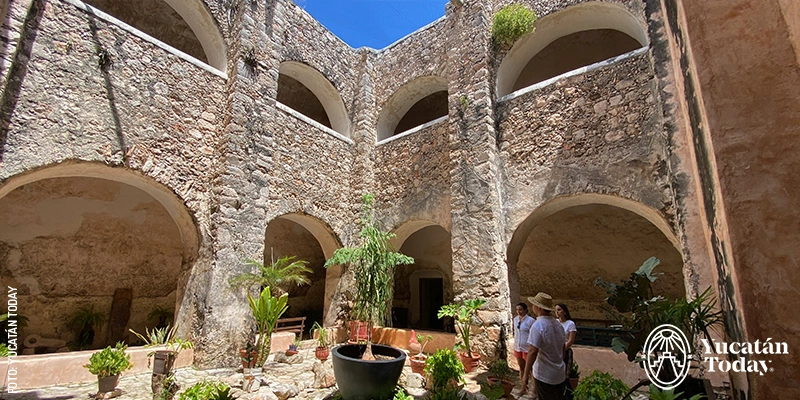
The awe-inspiring former monastery covers an area of 20,500 sq m (a little five acres), of which the atrium spans 7,268 sq m (1.8 acres). The atrium is located above street level, which suggests the entire monastery was built on top of a pyramid platform. However, it’s not its massive size or striking façade that makes Maní the crown jewel of the Convent Route. The interior of the St. Michael church is a religious art marvel, boasting several altarpieces dating back to the 17th century. Behind the main altarpiece, devoted, of course, to St. Michael, you can still see traces of the original murals that decorated the altar. And while the devotion to St. Michael is alive and well in Maní, the celebrations of Our Lady of the Assumption, around August 15, are just as crowded, if not more, by the faithful from Maní and its neighboring towns.
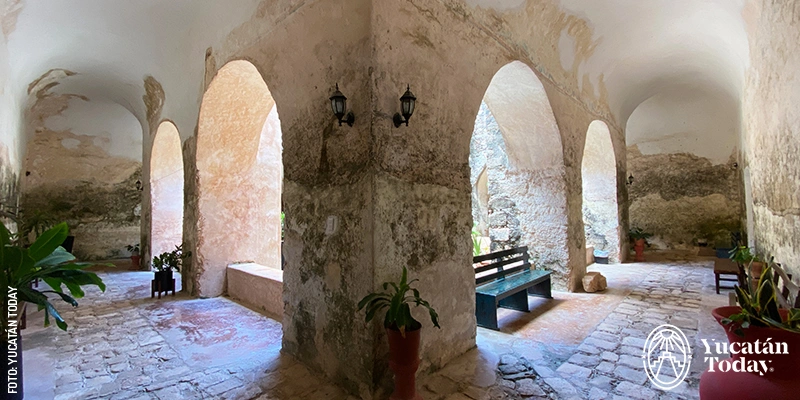
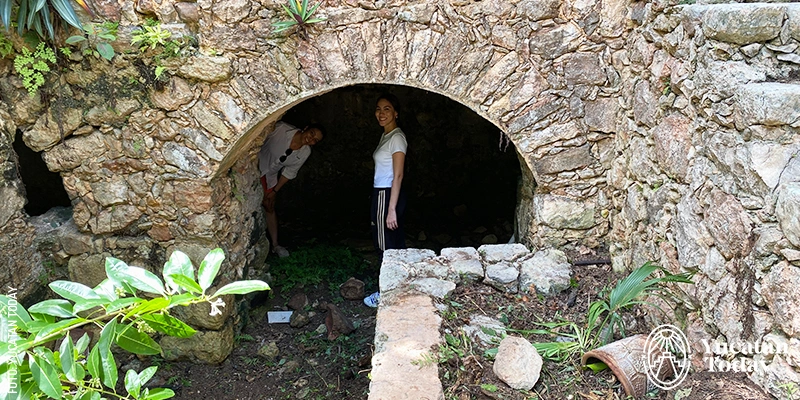
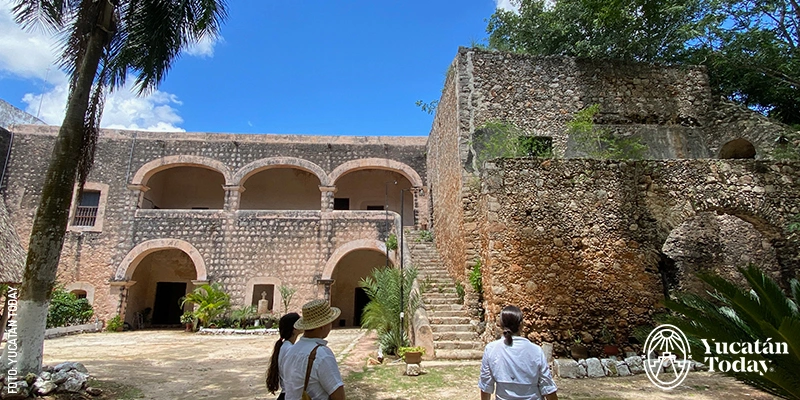
You can explore the church of St. Michael in Maní on your own; keep in mind, though, that it may be closed during the day, and that visits are not allowed during the services. For a fuller experience, sign up for the tours provided by Ayuntamiento de Maní (City Hall). You’ll hear about the history of Maní, the convent, and the religious art on display inside the church; plus, you’ll get to visit the inside of the monastery, including the orchard, the water wheel, and other spots that are not accessible to unaccompanied visitors.
Tour of the St. Michael Former Monastery
On weekdays, only with prior reservations
Saturdays and Sundays 12 pm, 1 pm, 2 pm y 3 pm
To reserve: direccionturismo2022@gmail.com
Admission: $35 pesos
FB: Visit Maní Mx
Xcabachén cave
The Xcabachén cave and cenote is a small, very accessible (for a cave) place, great for a quick stop. It’s only a few meters from the Maní City Hall and the former convent of St. Michael, and, despite its modest looks, it sits firmly at the heart of a bone-chilling Maya legend regarding the end of the world. If you take the monastery tour, make sure to ask your guide if they’re available to include this stop so you can hear the legend from a local’s point of view.
Grutas Xcabachén
Calle 27 x 30, Centro, Maní
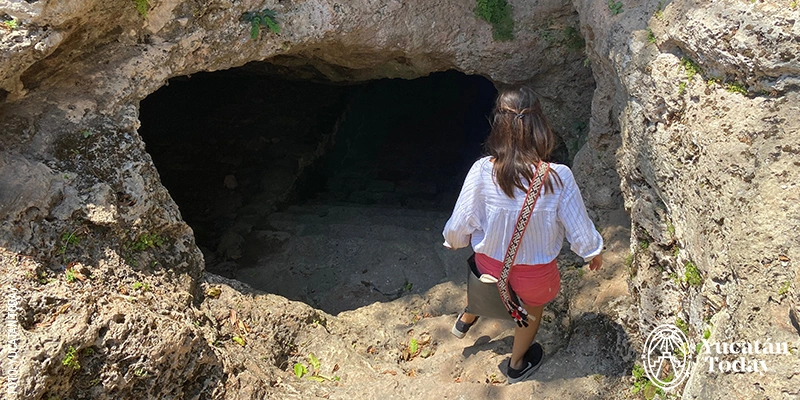
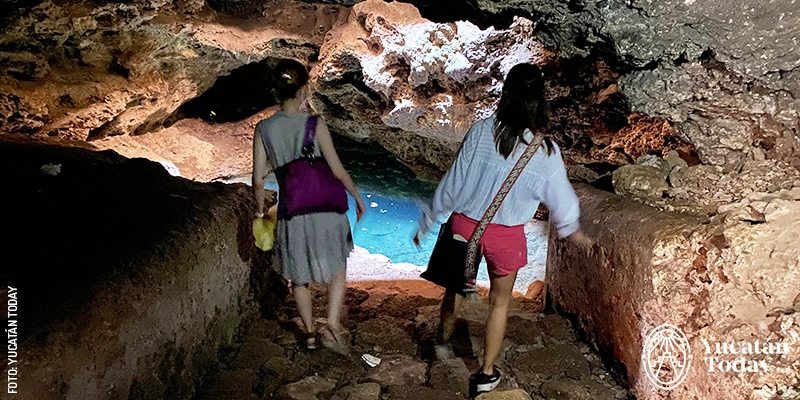
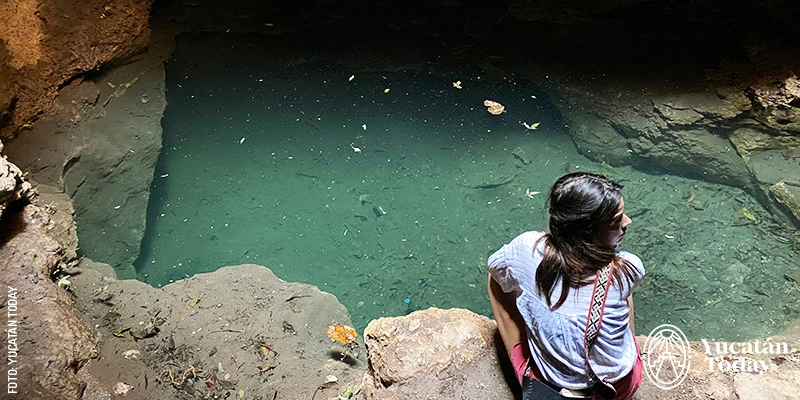
Visit a Melipona (stingless) bee farm
Yucatán is home to countless species of bees different from the one that’s best known in the world, the European honeybee (Apis mellifera). Yucatán’s native bees, most of which belong to the Melipona family, have a very special trait in common: they don’t have stingers. Another thing they have in common is the unique honey each species produces: in addition to having a very distinct flavor (very different from regular honey), it is produced in much lower quantities.
To really understand the beauty of Meliponine stingless bees, there’s nothing like visiting a Meliponario, or Melipona bee farm. This is a very enriching, fun, and educational experience that’s perfect for children, as there is no risk of getting stung. Maní is home to several Meliponarios; here we’ll be telling you about three of them.
Solar Maya Tierra Pachpakal
Solar Maya Tierra Pachpakal is a huge open space brimming with colorful flora and cheerful fauna that will surely leave you in awe. Fátima Castillo and her husband, José, decided to open their home to visitors in 2020, aiming to promote sustainable practices, raise awareness of the importance of Melipona bees, and provide unique experiences, initially for their own children, but eventually for visitors. And they’ve certainly accomplished their goal!
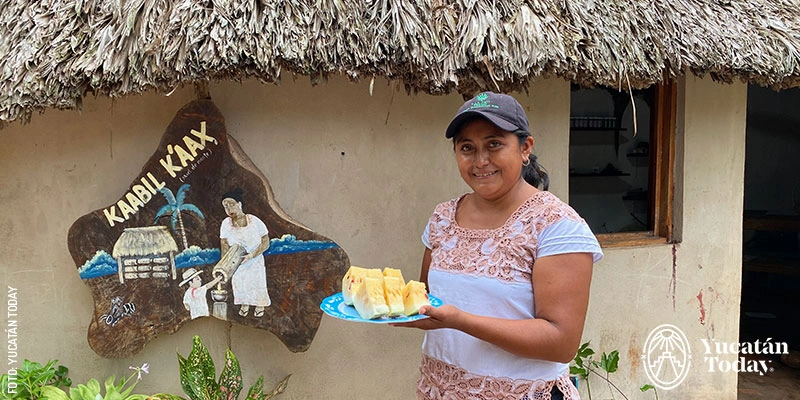
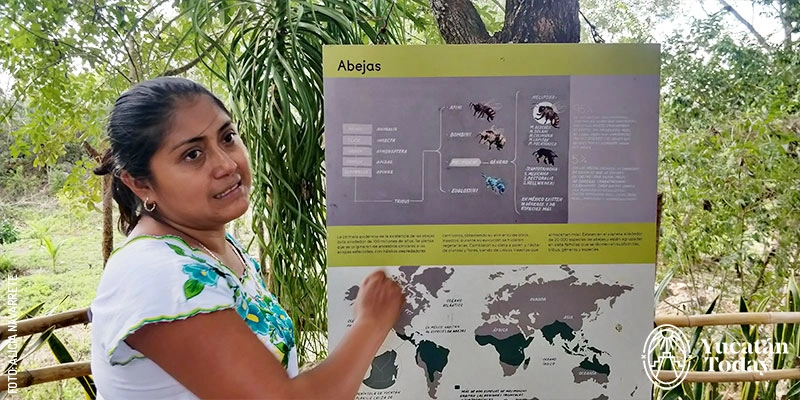
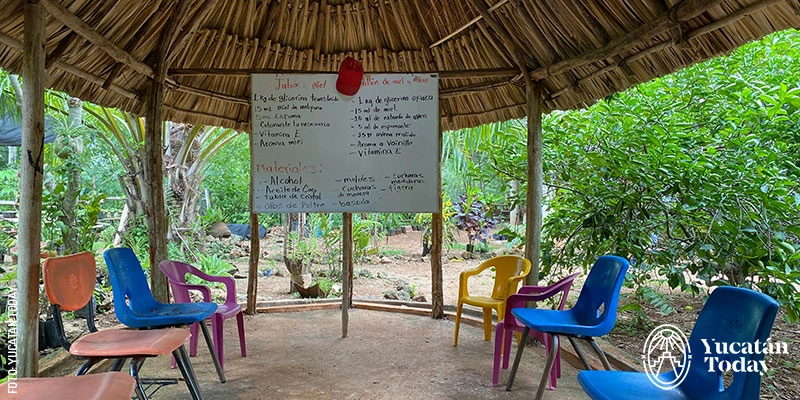
Presently, Solar Maya is working with different educational institutions where they have workshops to teach the children and young adults about ancestral traditions, such as the care of the Melipona bees (thought to be sacred by the Maya), cultivate medicinal plants and share the elders’ oral history for Janal Pixan (the local Day of the Dead celebration.) Another benefit is that they have turned into a selling point for other local entrepreneurs.
Solar Maya Tierra Pachpakal also serves as a community museum devoted to native bees. When you visit, you’ll have the opportunity to see and interact with different species of bees, in addition to the different types of honey they produce; each one more delicious than the other.
If you reserve in advance, Fátima and José offer the chance to either have a breakfast or lunch dish, prepared by Fátima herself with hyper local ingredients.
Meliponario Lool-Ha
The Lool-Ha Melipona Bee Farm is run by a group of 10 women. While Solar Maya Tierra Pachpakal focuses on tourism and sustainable consumption, the feeling at this place is more spiritual: Doña Eliza Interián, a proud Maya X-méen (medicine woman), believes nature is sacred and we should respect it. Because of this, before extracting the honey from her hives, she asks the bees for permission to do it; this tradition comes from her grandmother, who instilled in her two mantras: if there are no bees, human beings can’t exist, and, honey is medicine.
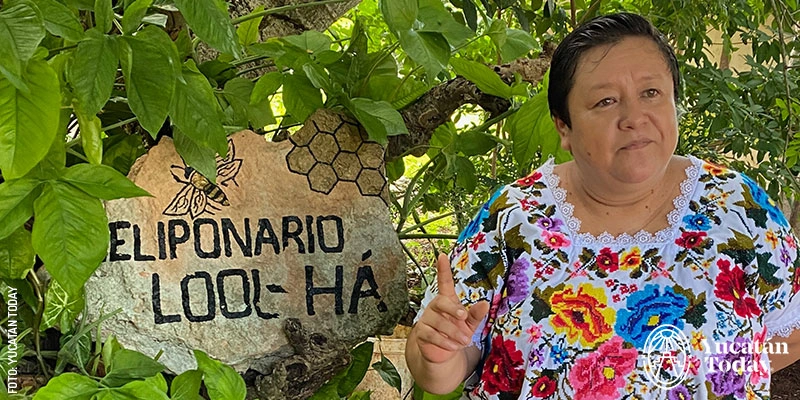
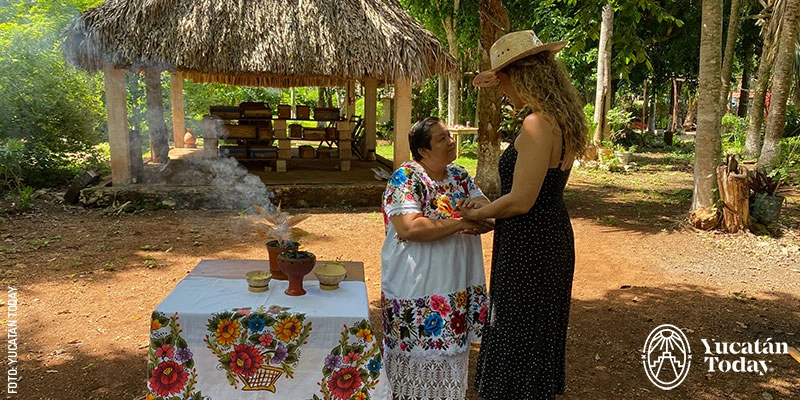
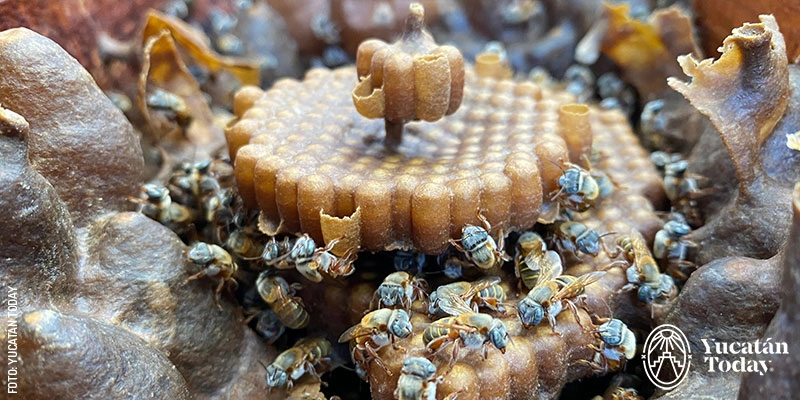
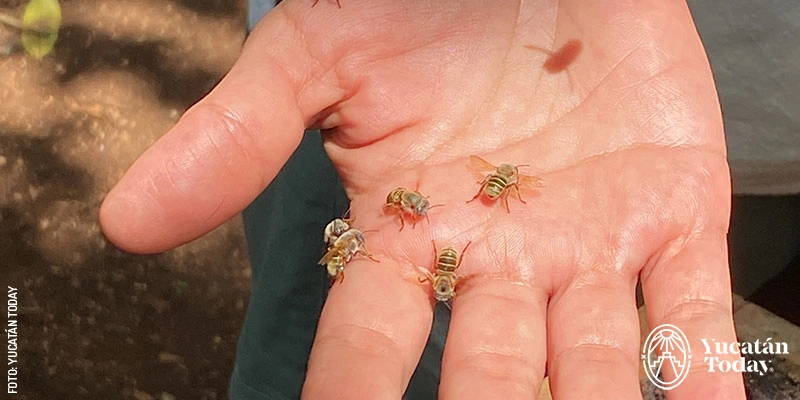
If, in addition to communing with her stingless bees, you are interested in experiencing a Maya ceremony, ask for an appointment through the Meliponario Lool Ha Facebook page or call 999 112 7825. Doña Eliza can perform energy cleansings and energy balances, in addition to sharing legends about Melipona bees.
Would you like to take some Melipona bee honey home? Doña Eliza sells it along with other Melipona-derived products; if you have the chance, make sure to try her delicious propoleum liqueur, made with the mix the bees made to keep bacteria off their hives.
Meliponario U Naajil Yuum K’iin
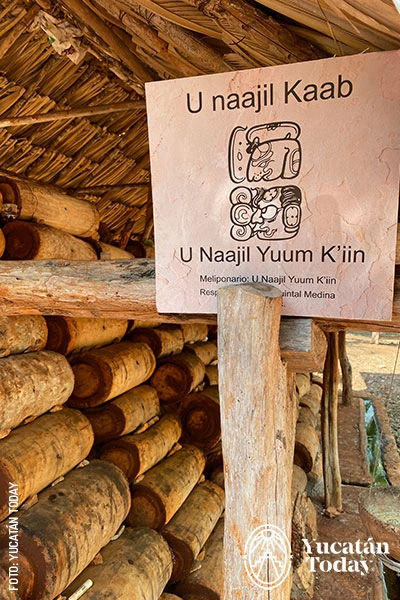
Father Luis Quintal’s U Naajil Yuum K’iin Melipona bee farm has a more educational focus. An important difference from the last two farms is that here you will see the hives inside of tree trunks (Jobones), keeping in with ancient Maya practices. These, recorded on the Madrid Codex, have been passed down generation after generation of Maya families, but are now in danger of being forgotten.
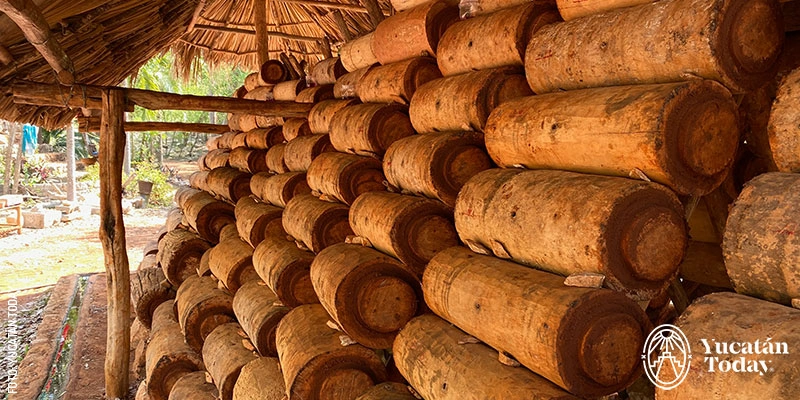
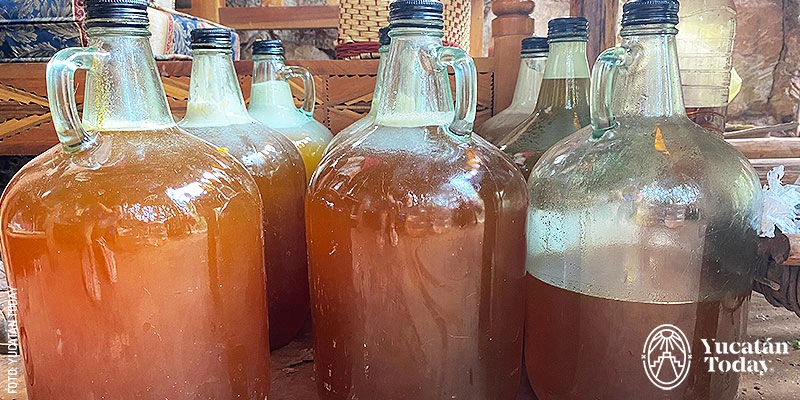
At the U Naajil Yuum K’iin, workshops are regularly organized to disseminate the traditional ways of handling the beehives, as this is what they want people to learn and do, instead of just selling honey and its products. Besides selling the Jobones with mature hives, they offer accompaniment to those who want to maintain them, thus guaranteeing success so people’s hives can prosper for years to come.
If you visit the U Naajil Yuum K’iin Melipona bee farm, you’ll find a wide, peaceful space, full of vegetation. You’ll see the process through which a tree trunk is turned into a Jobón, and how the bees make themselves at home in it. If you’re into the idea, you can also call in advance to check whether it’s possible to stay at one of their cabins.
Maya wisdom workshops
Learn how Yucatecan embroidery is made
Maní is a land of artisans, and while local embroiderers are skilled in more than one technique, the town specialty is Xookbil Chuuy (counted thread), known elsewhere as cross-stitch. To learn about how stunning Hipiles, Guayaberas, blouses, and other traditional garments are decorated, you can sign up for an embroidery workshop. In as little as 45 minutes, master artisan Marilú Burgos will show you how the garments are prepared and the stitches done, and you’ll go home with a souvenir of Maní made with your own hands. This workshop is available by appointment only, for a minimum of two people.
Marilú Burgos’s workshop
Every day, 10 am - 6 pm, by appointment
Tel. 997 102 3345
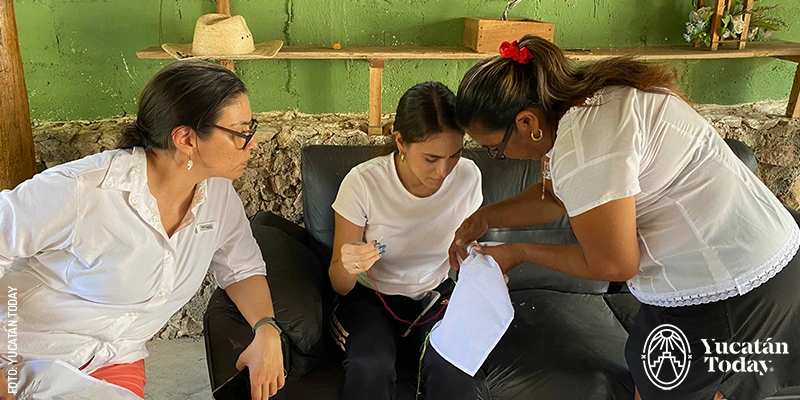
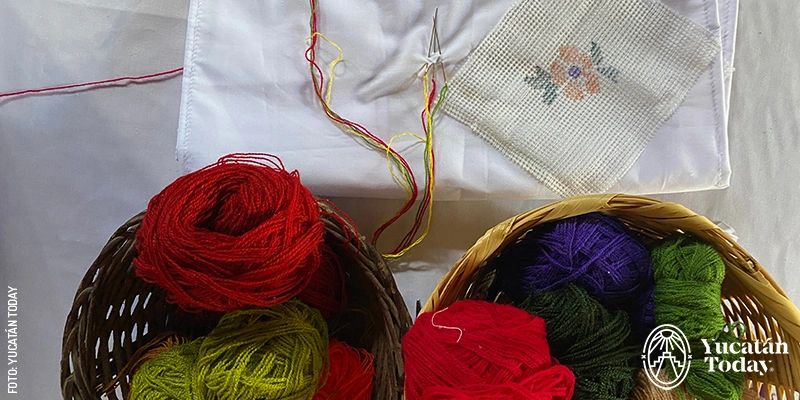
Learn to make a Mukbilpollo (baked tamal)
You may have heard about Mukbilpollo, the traditional dish Yucatecos prepare every Janal Pixan (the Yucatecan celebration of Día de Muertos). If your curiosity is piqued, Maní has just what you need: local restaurant Lol-Beh offers Mukbilpollo-making workshops for people of all culinary skill levels.
At these workshops, traditional cook Lolbéh Valle and her family will guide you through the entire process so you can shape, put together, wrap, and wood-fire-oven-bake your own Mukbilpollo.
A standout feature about the Lol-Beh restaurant Mukbilpollo workshop is that it’s available year-round, by appointment. And, you know, if you’re not really that interested in making a Mukbilpollo, but would surely like to try one, they make and serve them every Saturday and Sunday, regardless of the season.
María Lolbéh Valle Uc
Calle 27 x 28 y 26, Centro, Maní
Cel. 997 166 4565
FB: LolBeh.Restaurante
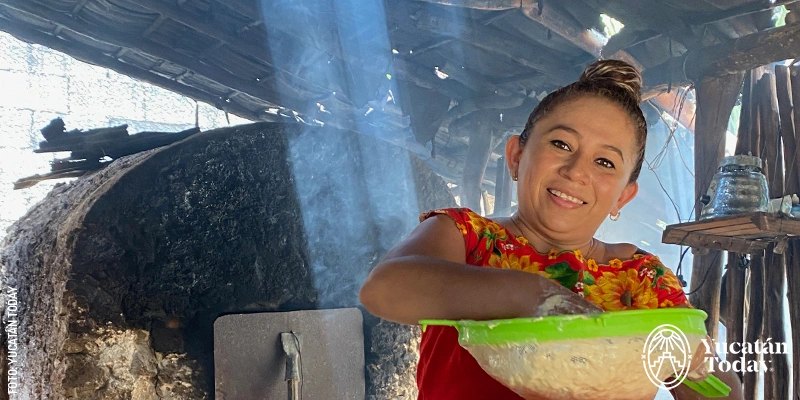
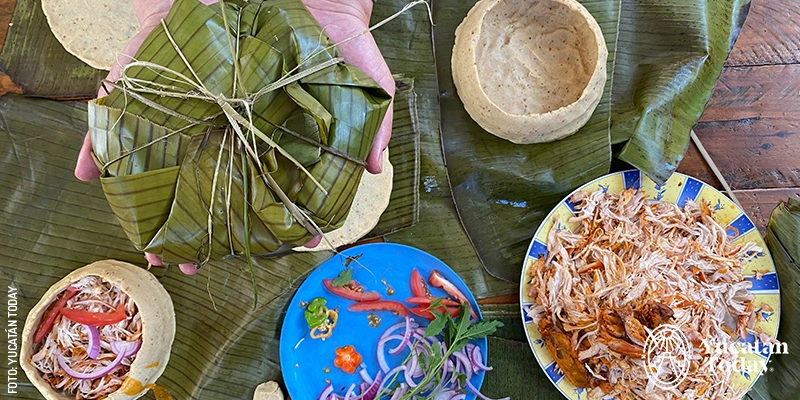
Learn to cook a Yucatecan dish (and try Yucatecan Botanas or snacks!)
Because Yucatecan cuisine is an impossibly diverse, delicious treasure, you can set aside some time off your Maní stay to learn to prepare a traditional dish from scratch at the Restaurante and Botanero Tuch Kaaj. The workshop includes everything, from grinding the herbs and spices to make your own Recado to “tortear (make your tortillas by hand),” prepare the fire, etc. But here’s the best part: while the food cooks, you get to sit down and enjoy a couple of beers like a good Yucateco: with traditional snacks.
Restaurant Tuch Kaaj also has a pool area where you can take the heat off. This experience is also available by reservation only, for groups of two and more.
Restaurante Tuch Kaaj
Calle 31 x 22 y 24, Col. San Isidro, Maní
Mon. - Sat. 12 - 5 pm, by appointment
Tel. 997 114 6086
FB: Tuuch Kaaj
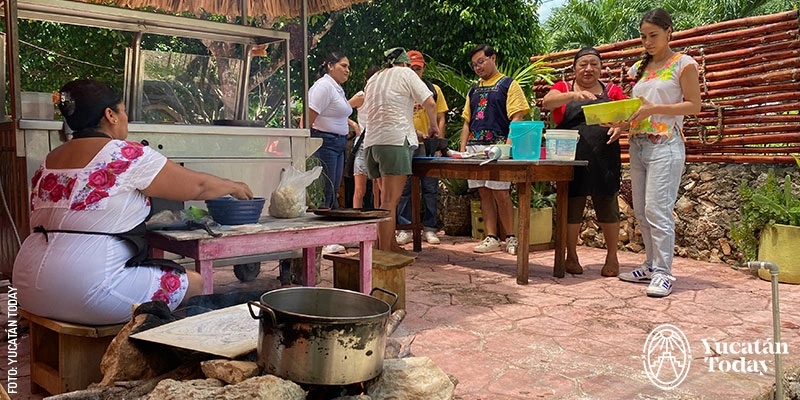
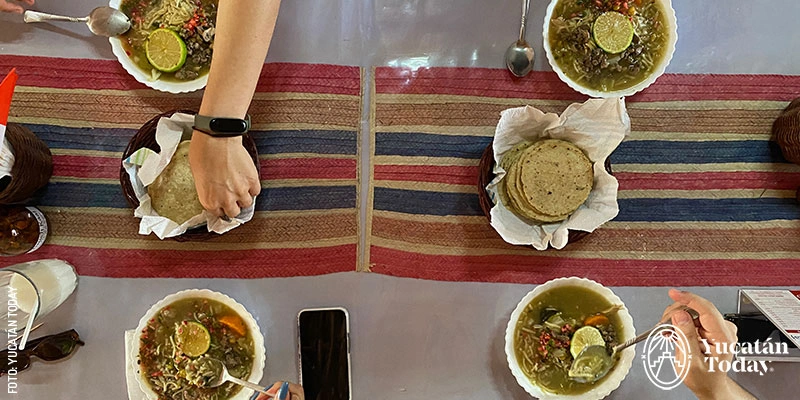
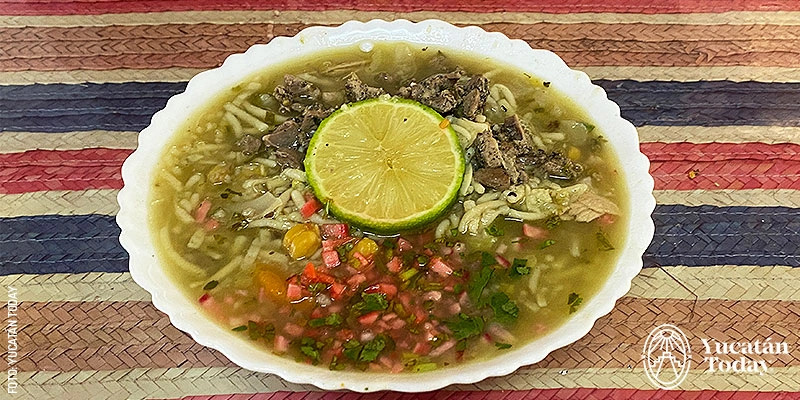
Where to eat in Maní
Maní offers an astounding variety of regional cuisine options. The local star here is Poc Chuc. Poc Chuc at Maní is famous in all of Yucatán because of its flavor and tenderness. The most famous restaurant in Maní is El Príncipe Tutul Xiu, but options like El "Poc-Chuquero" and the aforementioned Tuuch Kaaj and Lol-Beh are just as outstanding. If you feel you could use a break from traditional Yucatecan cuisine, Venzze Pizza offers Neapolitan pizzas; Hiccups, American-style dishes such as burgers, sandwiches, and pastas; and La Mestiza de Maní, steaks, wings, pastas, and other specialties.
For even more restaurant options in Maní, check out our restaurant directory.
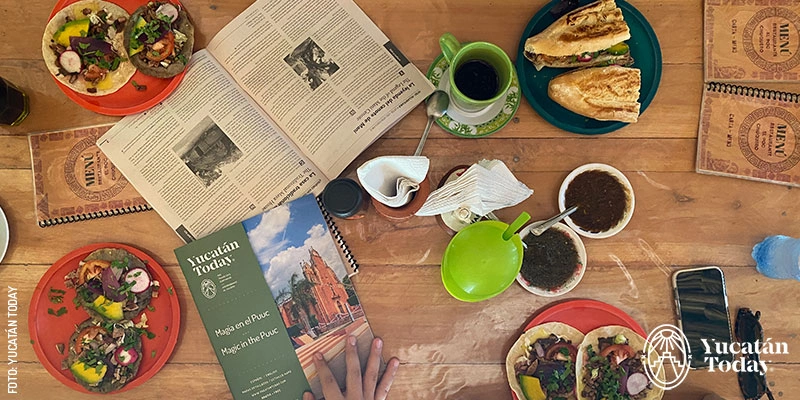
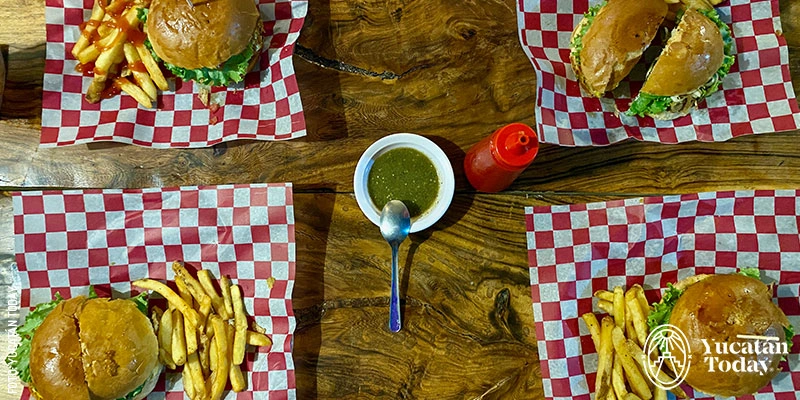
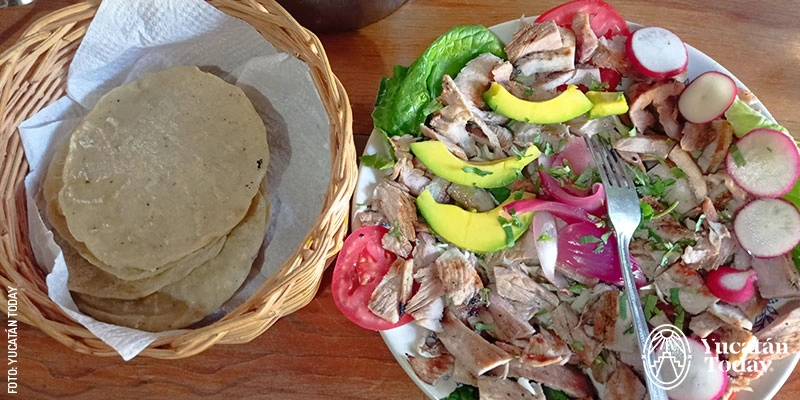
Where to stay in Maní
Posada Mary
Calle 26 x 25 y 27, Centro, Maní
Tel. 997 108 5043
Hotel Sac Naj
Calle 23 x 26 y 28, Centro, Maní
Tel. 997 129 8197
FB: Hotel Sac-Naj
Distances to and from Maní
- Distance between Maní and Oxkutzcab: 11 km (19 minutes by car)
- Distance between Maní and Ticul: 15 km (23 minutes by car)
- Distance between Maní and Tekax: 27 km (32 minutes by car)
- Distance between Maní and Uxmal: 44 km (50 minutes by car)
- Distance between Maní and Mérida: 95 km (1:25 hours by car)
- Distance between Maní and Chichén Itzá: 120 km taking the federal highway, 190 km taking the toll road from (2:10 hours by car in either case)
- Distance between Maní and Valladolid: 160 km taking the federal highway, 183 km taking the toll road (2:45 hours by car in either case)
- Distance between Maní and Espita: 164 km (2:50 hours by car, through Holcá and Pisté)
- Distance between Maní and Tulum: 288 km (3:45 hours by car, through Peto and Felipe Carrillo Puerto)
- Distance between Maní and Playa del Carmen: 312 km taking the toll road (4 hours by car)
- Distance between Maní and Cancún: 372 km (4:40 hours by car)
A note on using navigation apps
If you use navigation apps (such as Google Maps, Apple Maps, or Waze) to guide you, they’ll probably direct you to always take the toll roads, as they are “faster.” However, consider that the time difference between the toll and free roads isn’t usually longer than a few minutes, while the mileage can vary by tens of kilometers. Taking the free roads will take you through villages on more scenic routes, but on narrower roads, where it’s harder to overtake, for example, cargo trucks and other slow-moving vehicles.
Artículos relacionados
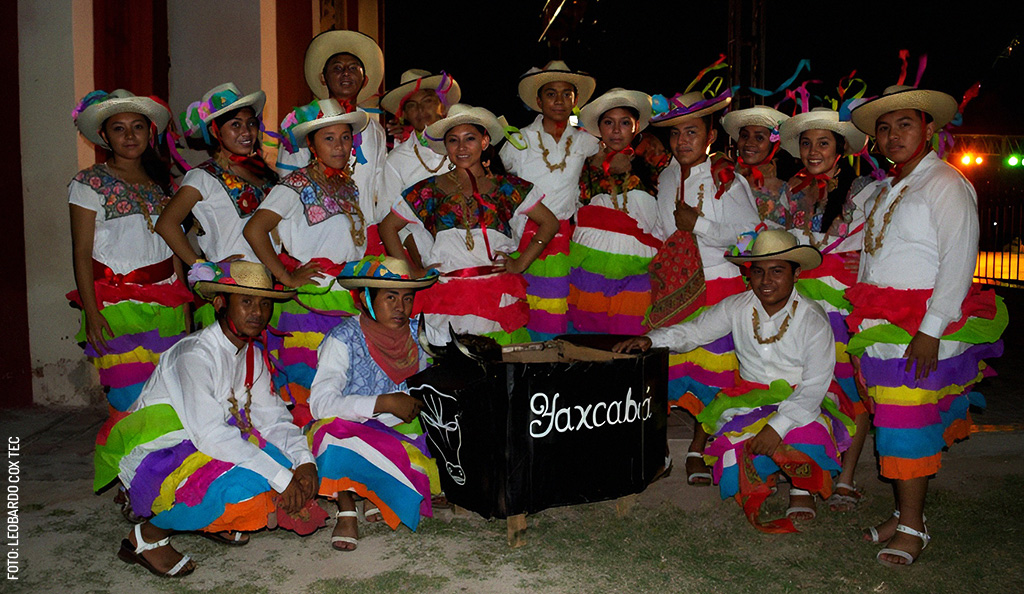
La tradicional Comparsa de Cintas y Danza de los Xtoles de Yaxcabá
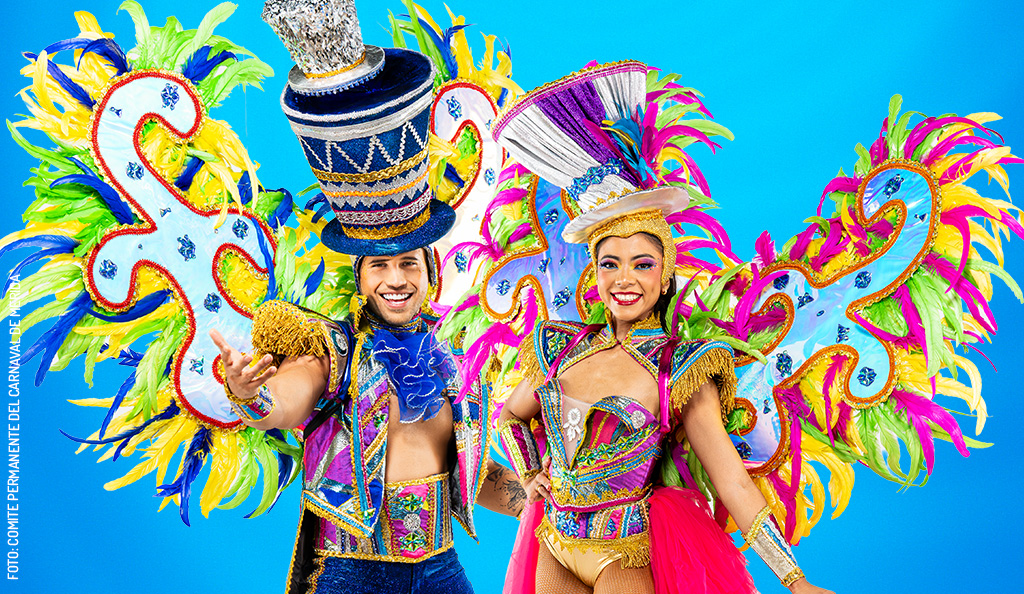
Circo Carnaval Mérida 2026: Cuando la tradición se convierte en experiencia
